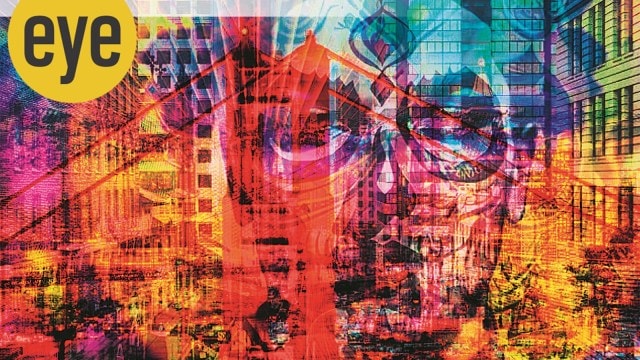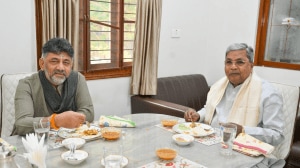How the South Asian Art & Literature Festival can help San Francisco fulfill its calling
San Francisco has always welcomed all, fought for the rights of the disenfranchised and marginalised, and spoken out against bigotry, way before others did
 San Francisco shows us just how interconnected our world is (Credit: Suvir Saran)
San Francisco shows us just how interconnected our world is (Credit: Suvir Saran)As we go from one festival and puja to the next, as we celebrate gods and goddesses and our deceased elders in these waning months of summer and monsoons, I realise the fervour that these celebrations create in us, and I would fail self and reader if I were to not take a moment to reflect on the incredible heft of blessings that the Napa Valley, Bay Area and San Francisco in particular have bestowed upon me. It was love at first sight and a love that has grown since and that has deep and heartfelt associations with caring, teaching, nurturing and shepherding. These are the values I associate with this small speck on the map, which, despite its size, has gifted us lofty ideals to follow in the pursuit of greatness that doesn’t leave anyone behind.
How fitting then that I find myself at the SALA (South Asian Art & Literature Festival), this weekend, hosted at Stanford University, founded by the incredible, peerlessly gracious and generous Kiran Malhotra. She is a resident of Saratoga, a hamlet in South Bay, which connects her to my most- beloved maasi, Aruna Lakhwara, who lived there a few decades ago. When I first visited the Bay Area, and as Kiran and I chatted about my participation at the festival, we realised she and my maternal aunt were acquaintances.
Shashi Tharoor, the man I look up to as a voice of rare, good conscience and brilliance, is a fellow speaker at the festival, which makes me feel even better about making this trip to the absolute other corner of the world for less than a handful of nights. Shashi’s is a friendship that I am most humbled by. I owe the existence of these words to this generous human being, who found in my words a ‘there there’, and encouraged me to start writing this column.
So, I find myself in San Francisco, the city I called home for two years. The buildings I look at with awe, the vistas I see at the periphery of the city, are as majestic today as they were when I first saw them as a teenager. I still see rich diversity in the populace, each piece of the colourful mosaic a mostly happy connection to the part of the world it feeds through that connectivity. In the faces of the residents, in the offerings of food, I find joy and comfort, excitement, and a remarkable statement to how interconnected the world is and how small it has become.
Of course, the book and television series Tales of the City and its amazing sequels by Armistead Maupin are my other most guttural connection to this small city with grandiose ideas and lofty ideals. In my reading of these literary jewels, I found respect for myself and my identity and was able to see a future and my place in this world. When in New York City and battling the hate and small-mindedness of some fellow humans, it was to Maupin’s work that I looked to, for a moment of levity. His pithy style of writing and dialogue that brought a cast of very relatable characters alive made me see hope, made me smile when I would have otherwise been crying or left shattered. It was always just the salve I needed to believe in our innate goodness and that tomorrow was a new day. It gave me hope that just around the corner, any second, I would find a ray of sunshine and the happy distraction I needed to add pep and spring to my step.
The clueless innocents, the broken hearts, the penniless artists, the hippy landlady, the Midwestern tall- lass-of-milk hero, the All-American sassy and brassy gal, the single hetro man who never keeps his home clean and yet is too swarthy and handsome to not notice, the newly arrived immigrant with bedroom eyes and a soul-stirring accent or a sexy lisp – Tales of the City gives one a glimpse of life that is honest and very relatable. It is what I lived, albeit in a much bigger city, with even more exaggerated levels in Manhattan. The books, the television version, the actors and the delivery, enriched my immigrant’s journey with comfort and a healthy dose of comedy and despair that made life just what it should have been. It was also very real, as I would see in person when I visited family members and friends who set up home in the Bay Area.
When I left the Bay Area, it was because a dream project had to be shuttered due to the misunderstandings between our restaurant’s landlord and the city of San Francisco. Heartbroken, I mourned for this baby I couldn’t deliver. My books and restaurants, my columns and recipes, these are my babies, and taking them from idea to fruition is what consumes many of my waking hours. I was sad to not be able to show San Francisco the dream that Paresh Ghelani and I had for American Masala, a dining establishment that was all American, proudly created and curated by two men of Indian origin. I also mourned that Paresh wouldn’t have the opportunity to impact the Bay Area with his soulful way of doing business and living life. It was my dream that his centered approach to life, business, living and loving, would provide solutions for what was ailing the city. My conversations with him about the rising crime and the disparity between the rich and the poor gave me hope that his move to San Francisco, as an operator of what would have been the most ambitious hospitality project in the city, would bring the titans of business a success story that came with heart, soul and acumen.
Much of San Francisco is cut off from itself. It is now a tale of two cities. Two ideologies and ways of being that will not very easily meet. Sadly, things are so bad that it will take Messianic intervention and a very large visionary human to rattle the minds on both sides and show them a way forward. On one side is woke liberalism; on the other, rabid cut-throat fundamentalism supported by rich brokers of capitalism. But I have hope that the city can get its mojo back. San Francisco has always welcomed all, fought for the rights of the disenfranchised and marginalised, and spoken out against bigotry, even before others saw and understood its dangers.
It is my hope that through storytelling like Tales of the City and through conversations at SALA, with the heft and might of the benefactors of this cultural asset and through the scholastic and unbiased sensibilities of a partner as noteworthy as Stanford University, we can have honest dialogue, open eyes and hearts, and shepherd San Francisco onto its new and next logical step of being a city that teaches the world through its holistic civic-mindedness. This, I believe, is the calling of the South Asian residents of this idyllic city by the bay and one that they can fulfill through the arts and literature of their homeland.



- 01
- 02
- 03
- 04
- 05




























